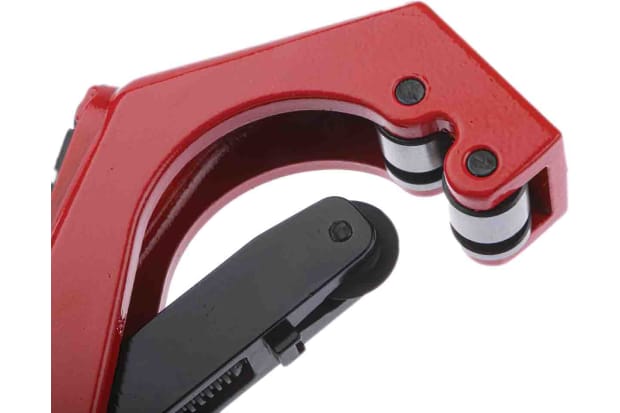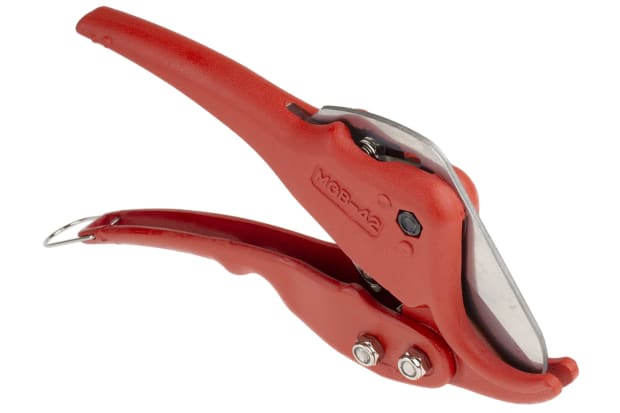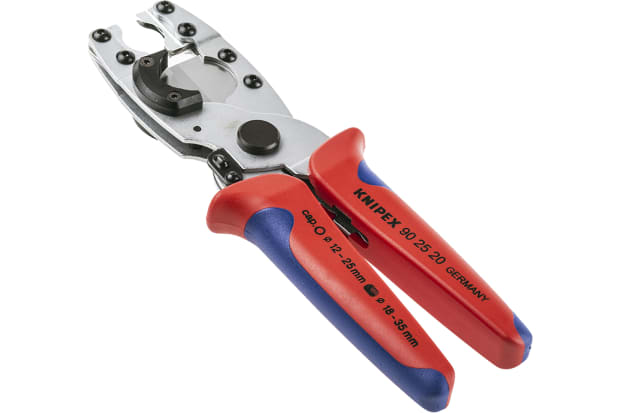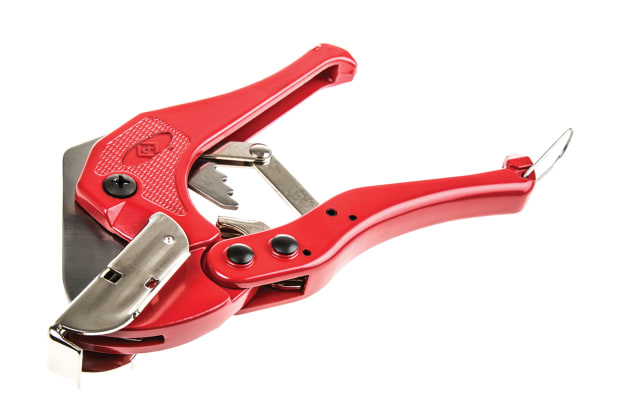- Published 15 Oct 2024
- Last Modified 15 Oct 2024
- 13 min
Understanding Pipe Cutters for All Applications

This detailed guide offers a thorough overview of pipe cutters, highlighting their various types and applications in plumbing and construction tasks. We discuss how to choose the right cutter based on material type and thickness while providing tips for optimal usage to enhance your cutting efficiency.
What are Pipe Cutters?
Pipe cutters are specialised tools designed for slicing or cutting pipes with precision and efficiency. Widely used by plumbers and professionals in various industries, these tools offer a reliable alternative to traditional cutting methods, such as hacksaws. Pipe cutters are favoured for their ability to produce clean, professional-quality cuts, making them essential for any plumbing or construction project.
One of the primary benefits of using pipe cutters is the neatness of the cuts they produce. Cuts made with these tools typically require minimal deburring or cleanup of excess swarf, which can save time and effort during installation or repairs. This efficiency makes pipe cutters a popular choice for professionals seeking effective and safe methods for cutting pipework.
Additionally, pipe cutting tools vary widely based on the materials they are designed to cut. Understanding the specific capabilities of different types of pipe cutters can help you choose the right tool for your needs. Common materials that pipe cutters can handle include:
- Plastic Pipes: Ideal for PVC and CPVC applications.
- Copper Pipes: Commonly used in plumbing and HVAC systems.
- Steel Pipes: Suitable for industrial applications and heavy-duty tasks.
- Aluminum Pipes: Often used in lightweight structures and frameworks.
Different Types of Pipe Cutters and Their Uses
Pipe cutters are essential tools in plumbing, construction, and various industrial applications. They provide a reliable and efficient means of cutting pipes to the desired length while ensuring clean, precise cuts. Understanding the different types of pipe cutters and their specific uses can help you choose the right tool for your project. Below, we explore the various types of pipe cutters, their applications, and the benefits they offer.
Pipe cutters are versatile tools that can be used for a wide range of applications, including:
- Cutting Pipes to Length: Ideal for preparing pipes before installation or modification.
- Repair Work: Essential for making quick repairs on existing piping systems.
- Removing Damaged Sections: Useful for cutting out and replacing damaged sections of pipework efficiently.
There are several types of pipe cutters available, each designed for specific materials and tasks. Here’s a detailed look at some of the most common types:
Plastic Pipe Cutters
- Uses: Designed specifically for cutting hard plastic pipes such as PVC and CPVC.
- Benefits: Provide clean cuts without damaging the material, making them ideal for plumbing projects.
Copper Pipe Cutters
- Uses: Effective for cutting thick copper pipes to the desired length.
- Benefits: Ensure precise cuts that prevent deforming the pipe ends, which is crucial for soldering.
Steel Pipe Cutters
- Uses: Suitable for cutting round metal pipes used in various industrial applications.
- Benefits: Strong and durable, these cutters can handle tough materials with ease.
Aluminium Pipe Cutters
- Uses: Ideal for cutting soft metal pipes like aluminum tubes.
- Benefits: Lightweight and easy to maneuver, making them perfect for lighter-duty tasks.
Brass Pipe Cutters
- Uses: Suited for cutting brass pipes and tubing in various sizes.
- Benefits: Provide clean cuts that are essential for fitting connections.
Automatic Pipe Cutters
- Uses: Used for quickly cutting pipes with minimal manual effort.
- Benefits: Highly efficient, compact, and easy to use in various settings.
Duct Pipe Cutters
- Uses: Specifically designed for cutting ductwork and ventilation pipes.
- Benefits: Deliver clean cuts that help maintain airflow efficiency.
Hose Cutters
- Uses: Ideal for cutting rubber hoses used in automotive or plumbing applications.
- Benefits: Compact and versatile, making them suitable for tight spaces.
Ratchet Pipe Cutters
- Uses: Suited for cutting pipes in confined spaces.
- Benefits: Feature a ratchet mechanism that allows for precise control and power application.
Spring-Loaded Pipe Cutters
- Uses: Ideal for cutting various sizes of pipes quickly.
- Benefits: Versatile and adjustable, providing high precision in cuts.
Midi Pipe Cutters
- Uses: Designed for mid-sized tubes and pipes.
- Benefits: Compact and adjustable to fit different pipe diameters.
Plier Pipe Cutters
- Uses: Used for cutting piping with minimal risk of crushing or deforming the material.
- Benefits: Robust and durable, making them suitable for various tasks.
How to Use a Pipe Cutter
Understanding how to use a pipe cutter effectively can help you achieve clean, precise cuts while ensuring safety during the process.
At the core of a pipe cutter is a sharp cutting wheel that slices through the pipe as it rotates. The wheel penetrates deeper into the material with each rotation, allowing for a clean cut. The number of rotations required to completely cut through the pipe depends on several factors, including:
- Material Type: Different materials (e.g., plastic, copper, steel) require varying amounts of force and time.
- Pipe Size and Thickness: Larger and thicker pipes will take longer to cut.
- Blade Sharpness: A well-maintained blade will cut more efficiently than a dull one.
While all pipe cutters function similarly, different types may have unique mechanisms or features tailored for specific applications.

To safely and effectively use a pipe cutter, follow these steps:
Step 1: Prepare the Workspace
Before starting any cutting task, ensure that you have turned off the water supply if the pipe is part of a plumbed-in system. This prevents any unexpected leaks or water damage during your work.
Step 2: Position the Pipe Cutter
For adjustable pipe cutters, open the cutter fully, place it around the pipe, and adjust it to fit snugly. For non-adjustable cutters, ensure the tool grips the pipe securely without slipping.

Step 3: Begin Cutting
To make a proper cut, rotate the cutter around the pipe while applying steady pressure, ensuring not to move the cutter laterally, as this can cause an uneven cut or damage the pipe. Continue rotating until the cutter fully penetrates the material, keeping in mind that the number of rotations will depend on the factors previously mentioned.
Step 4: Deburr the Cut Edge
Once you’ve successfully cut through the pipe, use a deburring tool to remove any sharp edges. This step is crucial for ensuring a smooth finish that won’t cause injuries or interfere with fittings.
Step 5: Clean and Maintain Your Tool
After use, clean your pipe cutter thoroughly to remove any debris or residue. Regular maintenance will prolong its lifespan and ensure optimal performance for future projects.
Common Mistakes to Avoid When Using Pipe Cutters
Using a pipe cutter can be straightforward, but several common mistakes can lead to poor results or even accidents. Here are some pitfalls to avoid:
- Neglecting to Measure and Mark: Failing to measure accurately or mark the cutting line can result in uneven cuts. Always take the time to measure twice and mark clearly where you intend to cut.
- Using the Wrong Cutter for the Material: Each pipe cutter is designed for specific materials. Using a cutter not suited for the pipe material can lead to damage or ineffective cuts. For instance, using a plastic pipe cutter on metal pipes will not yield satisfactory results.
- Rushing the Cutting Process: Cutting too quickly can cause the blade to slip or produce jagged edges. Take your time to ensure a steady and controlled cutting motion.
- Ignoring Safety Precautions: Neglecting safety gear, such as goggles or gloves, can lead to injuries. Always prioritize safety by wearing appropriate protective equipment.
- Not Deburring After Cutting: Failing to deburr the cut edges can lead to sharp edges that may cause injuries or interfere with fittings. Always use a deburring tool after cutting to smooth out any rough edges.
Safety Tips for Using Pipe Cutters
Safety should always be a top priority when using any cutting tool, including pipe cutters. Here are essential safety tips to follow:
- Wear Protective Gear: Always wear safety goggles to protect your eyes from flying debris and gloves to shield your hands from sharp edges.
- Keep Your Workspace Clean: A clutter-free workspace reduces the risk of accidents. Ensure that tools and materials are organised and that there is enough space to work comfortably.
- Position the Blade Away from You: When cutting, ensure that the blade faces away from your body. This precaution minimises the risk of injury if your hand slips.
- Use the Right Tool for the Job: Ensure that you are using a pipe cutter designed for the specific material you are cutting. This will help prevent accidents and ensure clean cuts.
- Check Sharpness Before Use: A dull blade requires more force and can slip unexpectedly. Regularly check your cutter's blade sharpness and replace it as needed.
How to Choose the Best Pipe Cutter
Selecting the right pipe cutter is crucial for achieving clean, precise cuts in various materials such as brass, copper, aluminium, and plastic. The best pipe cutter for your project will depend on several key factors, including the type of material you are working with, the size of the pipes, and the specific features you require from a cutting tool.
Here is some additional guidance to help you select the best pipe cutter for your task:
- Material Compatibility
- Ensure that the pipe cutter you choose is designed to cut the specific materials you will be working with. For example, dedicated copper pipe cutters are ideal for copper pipes, while PVC pipe cutters are tailored for plastic pipes. Understanding the material compatibility will help avoid damage to both the cutter and the pipe.
- Cutting Capacity
- Different pipe cutters have varying cutting capacities based on the diameter and thickness of the pipes they can handle. Check the specifications to ensure that the cutter can accommodate the range of pipe sizes you typically work with. For instance, if you frequently cut larger diameter pipes, consider a heavy-duty cutter or a ratchet pipe cutter** **that can provide extra leverage.
- Type of Cutter
- There are several types of pipe cutters available, including:
- Manual Pipe Cutters: These require physical effort but offer precision and control.
- Ratchet Pipe Cutters: Ideal for tight spaces; they allow for easy cutting with minimal effort.
- Automatic Pipe Cutters: Equipped with advanced features for high-speed cutting; these are suitable for industrial applications.
- Hydraulic Pipe Cutters: Best for heavy-duty tasks; they can cut through thick materials effortlessly.
- There are several types of pipe cutters available, including:
- Ease of Use
- Look for features that enhance usability, such as ergonomic handles, smooth ratcheting mechanisms, and lightweight designs. A user-friendly tool will make your cutting tasks quicker and more efficient.
- Portability
- If you need to transport your tools frequently, consider the weight and size of the pipe cutter. A compact and lightweight design will make it easier to carry to different job sites.
- Durability
- Choose a pipe cutter made from high-quality materials, such as heat-treated steel blades, to withstand regular use. Some models offer replaceable blades for long-term functionality.
- Cut Quality
- The best pipe cutters produce clean cuts without leaving rough edges that could interfere with fittings or connections. Look for reviews or specifications that highlight cut quality.
Additional Tips for Choosing a Pipe Cutter
- Confined Spaces: If you plan to use the cutter in tight areas, opt for a single-handed or ratchet pipe cutter that allows for better manoeuvrability.
- Adjustability: Adjustable pipe cutters offer versatility if you need to cut different sizes of pipes regularly.
- Heavy-Duty Requirements: If you're working with particularly tough materials like steel or thick copper, ensure that your chosen cutter is rated for heavy-duty use.
- Manufacturer Instructions: Always refer to the manufacturer’s guidelines regarding material compatibility and usage instructions to ensure safety and effectiveness.
Applications of Pipe Cutters in Various Industries
Pipe cutters are versatile tools used across multiple industries, each with its specific applications:
- Plumbing: In plumbing, pipe cutters are essential for cutting pipes accurately during installation or repair work. They ensure clean cuts that fit well with fittings and connections.
- Construction: Builders use pipe cutters for various tasks, including installing HVAC systems, plumbing lines, and other infrastructure projects where precise cuts are critical.
- Electrical Work: Electricians often use pipe cutters for cutting conduits made of PVC or metal, ensuring safe and efficient installation of electrical systems.
- Automotive Industry: In automotive applications, pipe cutters are used for cutting exhaust pipes and fuel lines, where precision is vital for performance and safety.
- Manufacturing: In manufacturing settings, pipe cutters are employed in assembly lines where pipes need to be cut to specific lengths consistently.
FAQs
Popular Pipe Cutter Brands
When selecting a pipe cutter, it's important to consider the brand and manufacturer, as quality can vary significantly. Conducting thorough research is essential to determine which tool best meets your needs. Numerous reputable brands offer a wide range of pipe cutters, including ratchet and spring-loaded models, as well as tools specifically designed for cutting plastic, copper, and brass pipes.
Here are some well-known pipe cutter brands to consider:
RS PRO
Discover the extensive selection of pipe cutters available from RS PRO, our in-house brand. Shop online today for reliable tools that meet your cutting needs.
Irwin
Explore Irwin’s range of pipe cutters available through RS. Find the perfect product tailored to your specific requirements.
Knipex
Knipex offers pipe cutters suitable for various applications. Click here to view their complete range and find the ideal tool for your projects.
CK
Shop CK pipe cutters designed with quality and precision in mind. Choose a product that aligns with your specific cutting needs.
Bahco
Bahco provides a wide array of tools, including high-quality side cutters. Browse their offerings to find the right tool for your tasks.
Related links
- A Complete Guide to Pipe Cutters
- A Complete Guide to Choosing the Right Grease Gun
- Choosing the Right Multimeter for Your Electrical Testing Needs
- The Ultimate Buying Guide for Ball Bearings
- Comprehensive Guide to Socket Screws and Their Uses
- A Complete Guide to Pliers
- A Complete Guide to Check Valves
- A Complete Guide to Socket Sets




